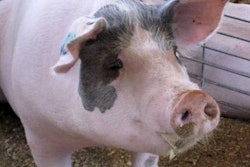The National Pork Board is leading the conversation to combat antibiotic-resistant bacteria and applauds the action steps defined by the White House through the Presidential Advisory Council on Combating Antibiotic-Resistant Bacteria (PACCARB). The Pork Checkoff, funded directly by America’s 62,000 pig farmers, has defined a three-point antibiotic stewardship plan centered on research, pig farmer education and outreach to pork industry partners and consumers.
“Antibiotics are essential tools for veterinarians and farmers in raising healthy livestock and producing safe food,” said John Johnson, the National Pork Board’s chief operating officer. “We are pleased to see the administration acknowledge the very real changes occurring on farms across America in accordance with new federal guidance.”
Johnson specifically points to references in the PACCARB report that notes U.S. Food and Drug Administration (FDA) Guidance 209 and 213, which bring the use of medically important antimicrobial medicine under the direct supervision of veterinarians to be used only when necessary to ensure animal health. The report also defines the need to collect more, and better, data.
“Pig farmers embrace the new guidelines and are actively implementing them across the country,” Johnson said. “Strengthening veterinarian relationships, requiring a prescription or veterinary feed directive for the use of medically important antibiotics in water and feed, and prohibiting use of medically important antibiotics for anything other than treatment, control and disease prevention are major steps forward.”
Since 2000, the National Pork Board has invested more than $6 million to research and collect data on this issue. The Checkoff also has provided tools to pig farmers that are specifically addressed in the Council’s report. The pork industry’s current research is focused on priority areas that include alternative antibiotic technologies, the environmental fate of antibiotics, antibiotic-resistant bacteria and resistance genes and route of administration on the potential development of bacterial resistance.
Also, the National Pork Board is researching new ways to evaluate models and metrics for collecting data on antibiotic use in the U.S. pork industry. This investment in research, which is consistent with the focus of the Council, further underscores the pork industry’s commitment to enabling and implementing on-farm change.
In February, the National Pork Board convened the first meeting of its Blue Ribbon Panel on antibiotic stewardship. The third-party panel includes seven experts who have specific experience and knowledge in animal and human health antibiotic practices or in retail and foodservice consumer marketing. The panel’s focus is to provide objective, independent counsel on the National Pork Board’s research, education and communication priorities.
The Pork Checkoff also recently hosted Resistance: The Antibiotic Challenge. The dialogue, facilitated by The Atlantic Media Group, brought together key opinion leaders from human health, animal health, government, pharmaceutical, and retail and consumer groups to discuss the challenge of responsible antibiotic use in the 21st century. Representatives from the National Pork Board, the Centers for Disease Control and Prevention, the American Public Health Association, the American Academy of Family Physicians, the American Veterinary Medical Association and other organizations shared what is being done to address antibiotic resistance concerns.
The full PACCARB report, issued on March 31, can be found here.















